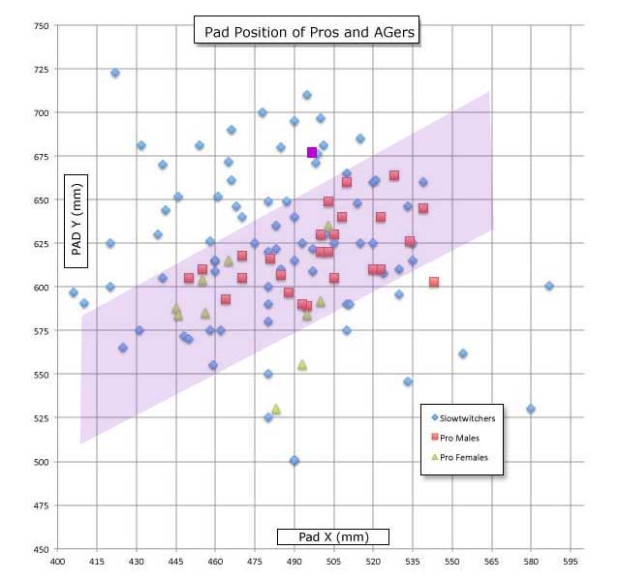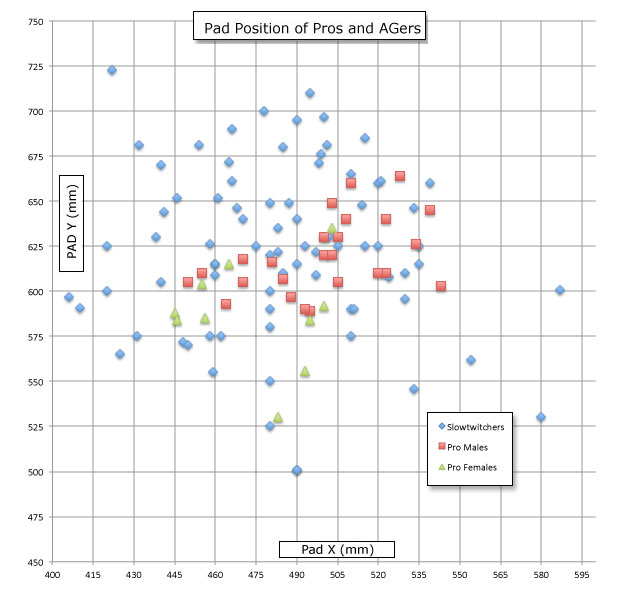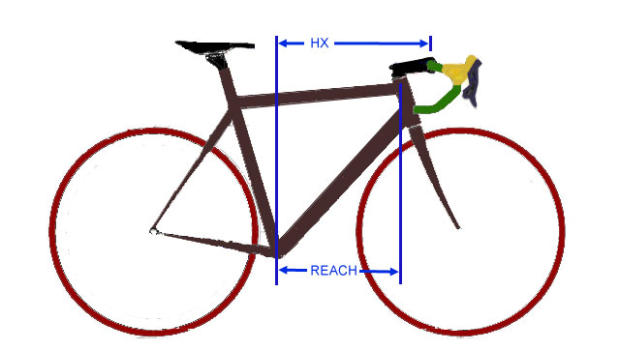Orthodoxy: Another Real World Example
Last year I wrote about Orthodoxy, and we have a real world example on our Reader Forum right now. There’s a guy who’s 5’9” and he wants to buy a bike and his fit session ended with a recommendation that he ride either a 58cm or 60cm Felt IA. He is understandably concerned about making the wrong choice.
To me, a guiding principle in bike fit is orthodoxy which means, in this particular case, an adherence to behavior demonstrated to work. Orthodoxy isn’t a guiding principle of bike fit. It’s a guiding principle. I promise you that you and your bike fitter rely on orthodoxy in every impactful aspect of your lives. Just, if you're like a lot of people, you selectively use it because you either: A) Haven’t trained yourself to reflexively ask whether your behavior is guided by orthodoxy; or B) You don’t know how to identify and quantify orthodox behavior a particular endeavor.
For example, if you want to go fly fishing you can either wing it, or you can try to identify the behaviors that good fly fishermen share. The trick is to identify true orthodoxy; to debase one’s own idiosyncratic beliefs in favor of what most experts do most of the time; and then fashion a method to express orthodoxy. Failing some process like this you may return from your vacation happy, but also probably fishless.

What I immediately set out to determine is whether the fit as executed on this subject passes the test of orthodoxy. First, I looked at Pad X and Y, which the fitter (rightly) provided as outputs. There’s a number of things your fitter ought to provide for you and you’re unwise to go into a fit session without knowing what these are. This fitter did a nice job of providing the output, with one exception: a video of the fit session is illustrative. I like to record what your position looks like when I’m done. Anyway…
The Pad Y and Pad X are the rise and run from the bottom bracket to the pads (either to pad-center or pad-rear and I always provide both because brands use either one of the other in their prescribing systems; I’m ambivalent on the religious question of pad-center or pad-rear). The fitter’s output of 677m and 500mm for this athlete is not far outside the “band of orthodoxy” as I show it in the graph above. You can see the data points above, and how pros, especially pro men, are pretty well in alignment with orthodoxy (and where many of you are outside of orthodoxy, either because you need to be or because you’re fit poorly to your bikes).
The subject is represented via that amethyst or violet square sitting above the band of orthodoxy. But he’s not too far above it! In this case, Pad X and Y would be not abnormal in relation to each other.
Not Enough Armrest Drop
But Pad X and Y are each larger than expected for this rider, that is, 677mm is not out of whack with 500mm, but these are numbers you’d expect of someone 6’2”, not 5’9”. So I looked for other tells.
There are two metrics that stood out. One was armrest elevation, that is, just the vertical drop from the saddle to the pads. The fitter’s report showed 52mm of drop, and he should have more than this.
To just double check I took the rider’s saddle height (736mm) and I took the cosine of the angle between verticality and the seat angle (about 80 degrees of seat angle means that angle formed is about 10 degrees), and that gave me a rise of 725mm from the BB, and if you subtract 52mm from that you get 673mm of Pad Y, which is pretty darned close to the 677mm the fitter measured. So, the fitter’s measures support each other (inside the allowable margin of noise you typically find in bike fitting equipment and equations).

Nevertheless, while the fitter was precise and exacting in his measures the fit itself was not congruent with orthodoxy. What is orthodoxy for armrest drop? One pretty good rule of thumb is that armrest drop = .005 x the saddle height squared minus .2 x the saddle height. So…
The saddle height, if I might be allowed to switch to centimeters for a moment, is 73.6cm. So, that squared x .005 = 27. The saddle height x .2 = 14.7. Now, 27 – 14.7 = 12.3cm. That’s for a pro. What I would expect for a pro athlete with a saddle height is 73.6cm is that his aerobars sit about 12cm below his saddle.
That’s in the band in the chart above where you see those red squares denoting PRO positions. This rider isn’t at 12cm of armrest drop. He's at 5cm of drop. Even if you allow for some fudging higher because he’s an age group rider, so on and so forth, you’d still get to 9cm or 10cm, all things equal.
Therefore, instead of 677mm of Pad Y for this athlete with about 5cm of armrest drop, I’m saying that I’d like a Pad Y of 605mm ideally (which is what he would have with 12cm of armrest drop, and perhaps up to 630mm if life happens and the world isn’t fair and he’s just higher than the pros I tend to fit. So, 600mm to 630mm would be fine with me. But, 677mm? That’s high.
Saddle Too Far Forward
The second tell here is the seat angle or, in this case, the saddle setback from the bottom bracket. Experienced fitters, like Trent Nix at Trishop in Plano, TX, saw both these metrics right away in a post to this forum discussion: "52mm drop seems pretty pedestrian for a saddle height that high,” and, "The ISM Racing is a stub-nosed saddle and it has to be set up a couple of centimeters behind the bottom bracket,” rather than 6mm in front of it.
Trent very astutely pointed out that, in all likelihood, "the fitter let the athlete take charge of the fit too much and let the saddle come way too far forward,” acknowledging that he himself has made that mistake, as we all have. What keeps us from going down that road of losing control of the fit is honoring orthodoxy, and paying attention to the data that measures it. I wrote awhile back about HX as the most important single metric for me, as a fitter, during a road fit. In the case of this athlete’s fit, Pad X and Y, seat fore/aft and handlebar elevation were all numbers incongruent with this rider’s stature.
Split-nosed saddles like those made by ISM, when used by triathletes, usually require a position where the leading edge of these saddles sit several centimeters behind the leading edge of a standard saddle ridden by that same rider. Normally, the nose of a saddle sitting 6mm in front of the BB would be fine for a rider of this stature if aboard a standard tri saddle. But a split-nose saddle? Probably 2cm or 3cm behind the BB. Or more.
Too Much Cockpit
In the old days, saddle nose to the ends of the extensions were pretty close to BB to saddle top, just as your wingspan is pretty close to your height. That's modified by morphology: long-leg, short-torso riders will have a cockpit shorter than saddle height; long-torso riders the revers. But, not horribly so.
As noted above, we ride with our split-nose saddles further back than we rode our standard saddles. Our hips are in the same position, just, we tend to nose-ride the ISMs and Cobb 55s. How much do we push them back? 4cm to 5cm is about average, but it can be more. Therefore, this fellow's 73.6cm of saddle height should yield, on average, maybe 79cm of cockpit. This rider's fit report shows a cockpit of 85cm. Whoa! My guess, this guy has a very obtuse shoulder angle.
If i didn't know any better I'd say he's riding a superman position, just based on the numbers.
The Upshot
Therefore, the upshot, I would expect this rider – with a saddle height of 736mm and with a stature of 5’9” – to have a Pad X not of 500mm, but more like 475mm, maybe 465mm, or thereabouts. Pad Y? If that 52mm of handlebar drop is doubled, then instead of 677mm more like 625mm. If he were a pro? More like 600mm.
If you plunk Pad Y and X of 625mm and 475mm into Felt’s downloadable calculator you get either a 54cm or 56cm IA10 (as one example), much more like the size this athlete would be expected to ride. Interestingly (or not) that Felt calculator comes with a default set of inputs, which are a 740mm saddle height, 470mm Pad X and 590mm Pad Y. I don’t know who chose those but it’s a nice, tidy set of metrics you’d expect for a guy who’s got that saddle height (within 4mm of the saddle height of the subject).
Now for some caveats. I wasn’t present at this fit. I don’t know why the fit went as it did. It may well be that the subject complained to high heaven when the fitter moved him into the position orthodoxy suggests. Also, if you fit by the guides to orthodoxy I’ve outlined here then it’s not a dynamic fit. You’re back to fitting to numbers which takes into account none of the idiosyncracies of the athlete. It’s prescribing over the phone. So, good fitting is an allowance for the morphology, the pedaling dynamics, the comfort of the rider, guided by the metrics that circumscribe and describe orthodoxy.
Orthodoxy In a Post-Fact World
Bike fitting, when it's unmoored to orthodoxy, is a small example of a pervasive problem. The internet has gifted us with a great leveling, where small but true voices can break through. It’s also given us a billion experts – in everything – whose guidance is underpinned by nothing. As a society we’ve chosen the luxury of believing what makes us feel good until we feel bad, and then we go to the doctor and depending on the severity of our illnesses we decide science, medicine – which relies entirely on orthodoxy! – is pretty good after all.
It is the lazy mind that fails to research, quantify, and weigh orthodoxy. Any coach, bike fitter, manufacturer, or anyone else in or out of our avocation of triathlon, who fails to consider the best practices of those who came before is a fool. I’m often asked how I generate the quadratic equations and other metrics that establish orthodoxy and in every case the answer is this: I observe, over time (over 30 years, as of this writing) how the best exemplars of sport do their sport. And then I try to express that behavior mathematically. It’s not very different than clinical trials in medicine. Orthodoxy is a wager on the crowdsourced behavior of the “winners" who came before you.





Start the discussion at slowtwitch.northend.network